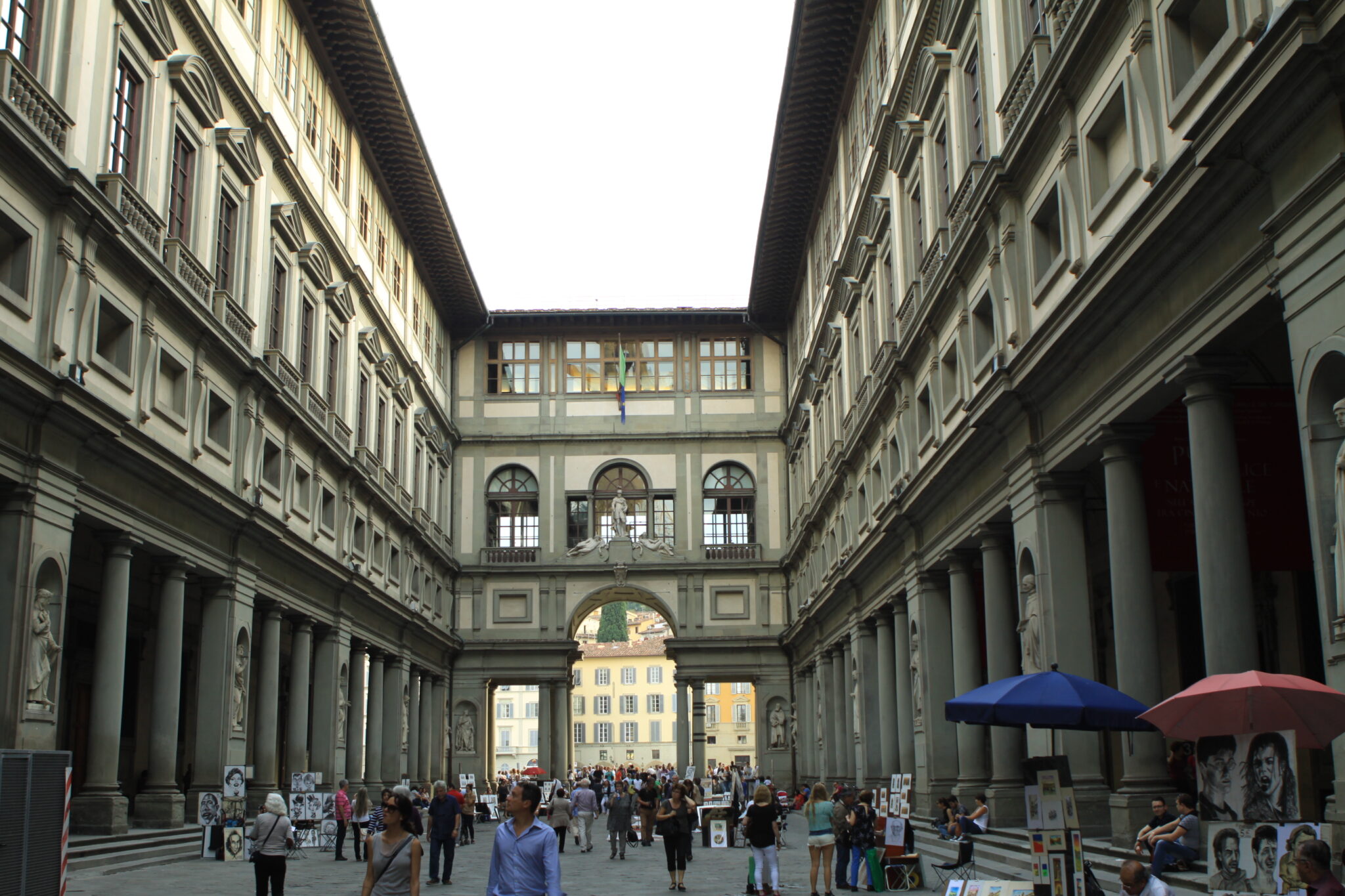Galleria degli Uffizi – Firenze
L’edificio che ospita la Galleria degli Uffizi, uno dei musei più visitati del mondo, viene edificato nel 1560 per volontà di Cosimo I de Medici, su progetto di Giorgio Vasari.
La destinazione dell’insolita costruzione, che prevede una pianta a “U” costituita da due corridoi o “ali” laterali poggianti su due lunghi loggiati e una facciata breve che guarda verso il fiume Arno, è inizialmente ad uso civile e funzionale: da qui il nome “Uffizi”, a sottolineare la funzione di nuova sede degli uffici delle Magistrature, posti sotto il diretto controllo del Granduca che abitava di fronte, a Palazzo della Signoria.
Quando il figlio di Cosimo, Francesco I, decide di far allestire una piccola sala ottagonale ispirata alle sue ricerche alchemiche legate ai quattro elementi naturali al secondo piano di uno dei corridoi, ben presto qui viene trasferito il primo nucleo della collezione di opere d’arte della famiglia.
I successori prediligeranno la struttura ove collocare via via altri capolavori, fino a costituire una vera e propria galleria privata, visitabile, al tempo, solo attraverso una richiesta scritta da parte di un’élite ristretta di persone. Quando l’ultima erede, Anna Maria Luisa de Medici, vincola il patrimonio alla città, gli Uffizi diventano un museo pubblico, ufficialmente aperto nel 1765.
Attualmente la Galleria, che fa parte del circuito dei Musei Statali Fiorentini, ospita una collezione di opere che vanno dall’antichità all’età contemporanea, con un focus sulla pittura fiorentina di XV e XVI secolo, e che comprendono capolavori come la Maestà di Giotto, la Nascita di Venere e la Primavera di Botticelli, il Tondo Doni di Michelangelo, l’Adorazione di Leonardo Da Vinci e la Medusa di Caravaggio.











